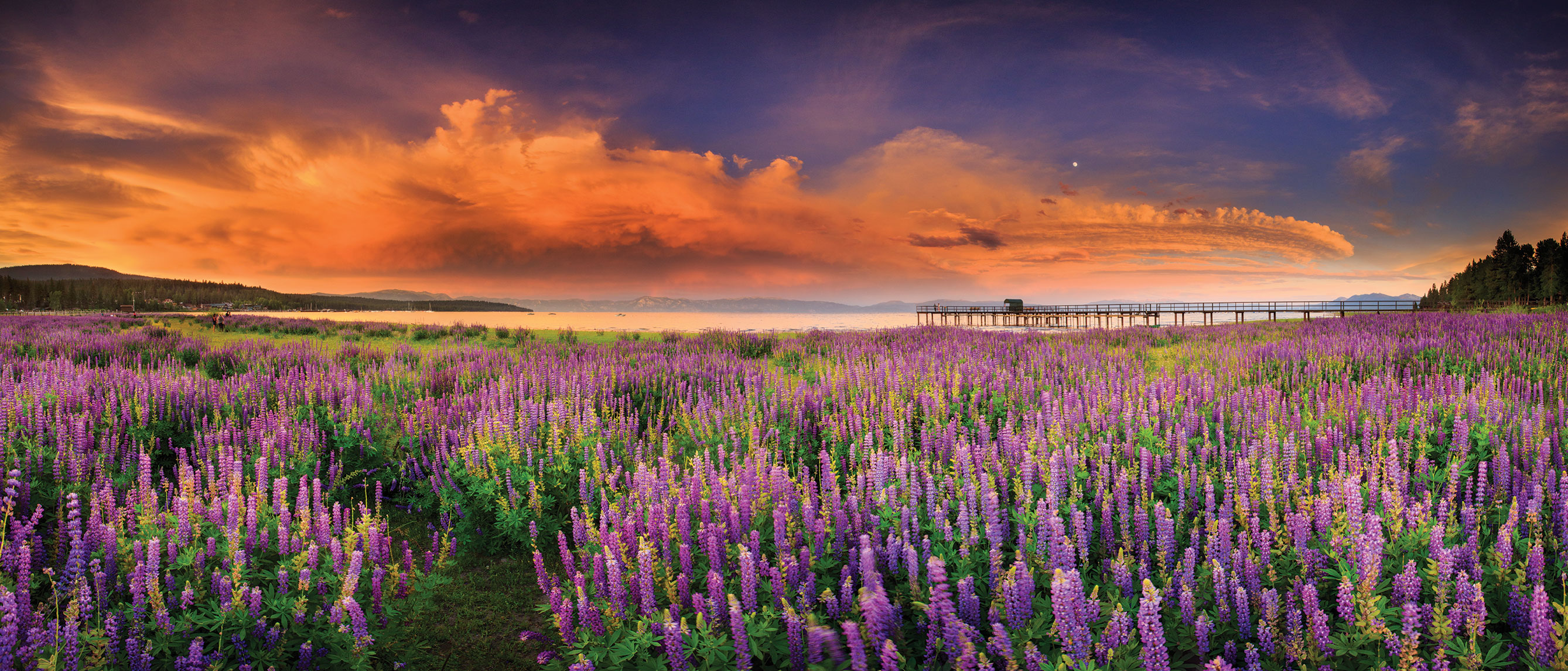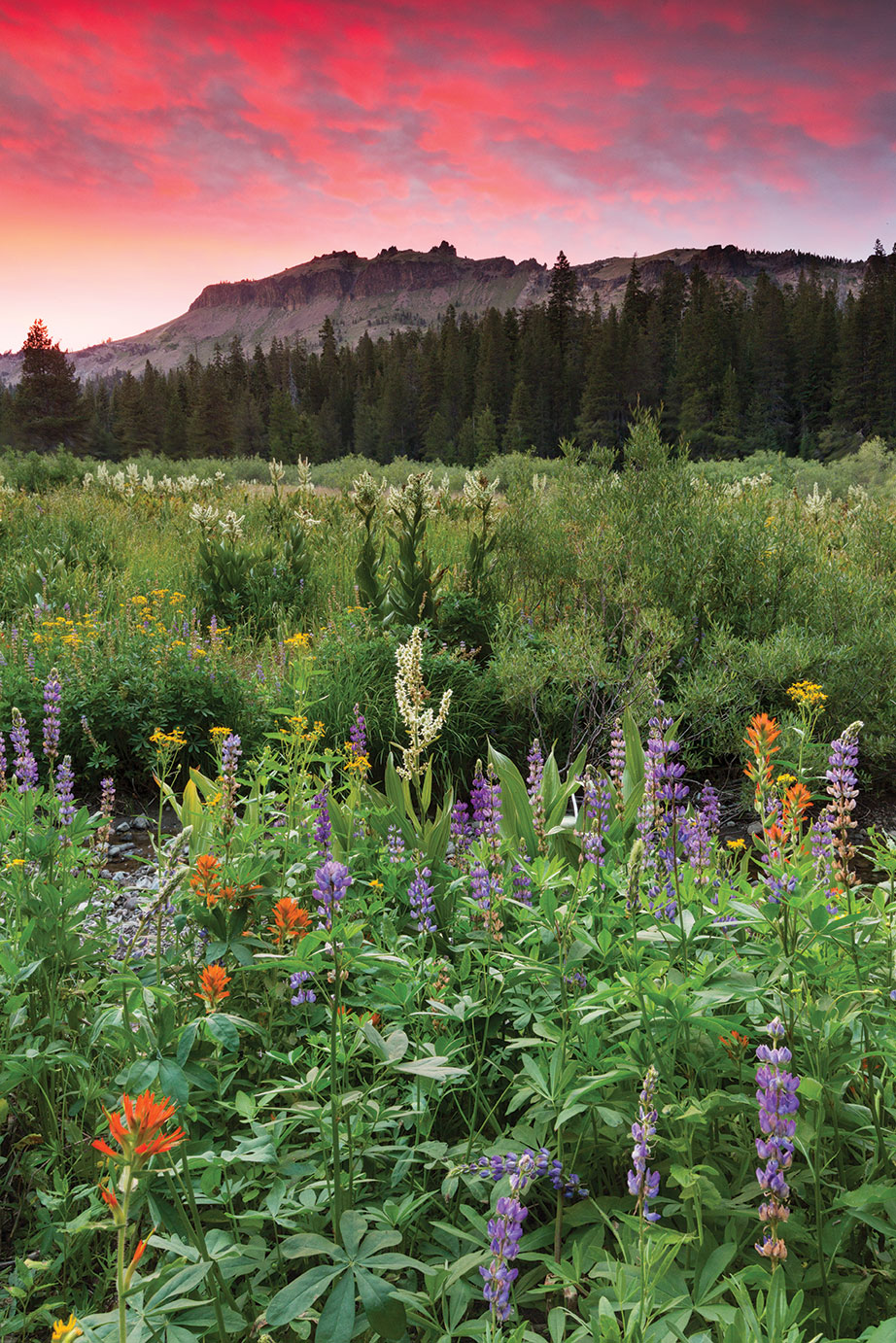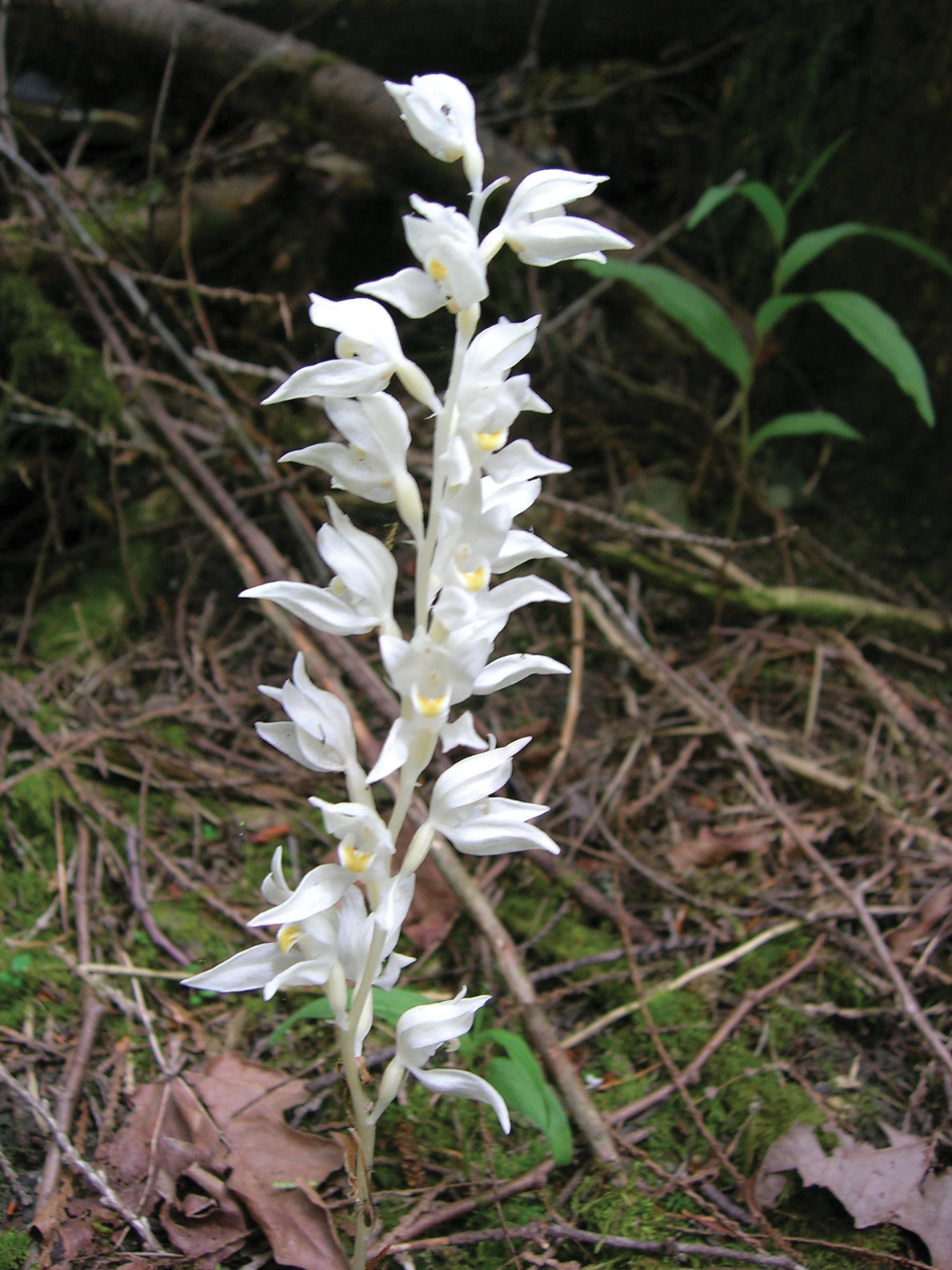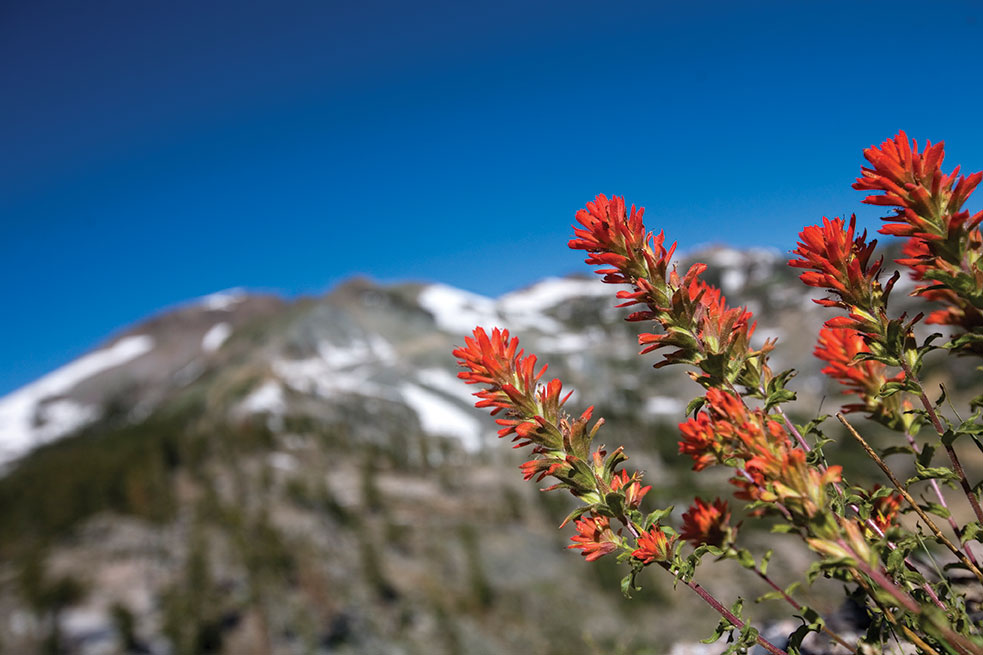
29 Jun Nature’s Dazzling Display
Thanks to winter’s return after a four-year hiatus, Lake Tahoe’s wildflowers are poised to impress with a banner year
After four years of drought, Tahoe is heading into summer on the heels of an average snowpack winter: The Lake is once again flowing from its outlet, and Tahoe’s flowering plants, having waited patiently for the right opportunity, are poised to erupt in a display not seen since 2011.
Wildflower Wonders
In anticipation of this bloom, the Tahoe Institute for Natural Science (TINS) is sponsoring a Tahoe Wildflower Big Year, which will include a wealth of opportunities for learning about and experiencing Tahoe’s rich wildflower flora.
The Tahoe Wildflower Big Year is sure to be a successful event, as who doesn’t like wildflowers? They dazzle us with myriad combinations of colors, shapes and fragrances. Some, like Washington lilies or towering larkspur, can impress us with sheer height, while large-leaf lupine found along Tahoe City’s shoreline stand out with their massive aggregations. Sometimes tiny flowers, when taken en masse, can produce an impressive visual display rivaling the larger species, as with porterella at Page Meadows or carpets of tiny blue-eyed Mary blossoms adding swaths of color to open forests.
For me, there is great pleasure to be had in finding some of the smaller, less conspicuous flowers hiding among the dappled light of the forest floor, species like steer’s head or rattlesnake plantain. Many of these forest flowers have complex shapes, leaving one to ponder how they ever manage to get pollinated. Other forest floor species like pinewoods lousewort and Brown’s peony actually hide their flowers beneath frilly foliage, as if they are hoping to prevent pollination altogether. However, these specialized flowers recruit pollinators in unique ways, forcing bees and other pollinators to adopt certain postures and behaviors that ultimately lead to more efficient pollen exchange.

An assortment of wildflowers at the foot of Castle Peak, photo by Grant Kaye
Orchids in the Woods
Orchids comprise the second largest plant family on the planet and are known for unique flower shapes and structures. Though largely a tropical group, about a dozen species can be found in the Tahoe region, including the rattlesnake plantain. Unlike their tropical cousins, all of Tahoe’s species possess small flowers, either green, white or reddish. The most conspicuous of these is the rein orchid, whose small spikes of white flowers can be found in a variety of moist habitats, particularly seeps and springs. One of the hardest to find is the phantom orchid, which is restricted to shady forests of the West Shore and only reveals itself in years with considerable moisture. We have our fingers crossed that it will show for this year’s Tahoe Wildflower Big Year.
Phantom orchids, along with their close relatives the coral roots, lack chlorophyll and therefore cannot gain energy through photosynthesis. Instead, they tap into mycorrhiza (the symbiotic root systems between fungi and other plants) and steal nutrients, especially carbohydrates. This form of feeding is known as myco-heterotrophy, and several other plants that engage in this strategy of parasitism are among our most beloved Sierra plants: pinedrops and the early-blooming snow plant. Many plants that do photosynthesize nevertheless parasitize the fungal associations of other plants, or sometimes they simply parasitize the roots of other plants directly. Well-known examples of the latter include the roughly ten species of paintbrushes found at Lake Tahoe.

Phantom orchid, courtesy photo
Finding the Flora
So, where do I recommend going to look for all of these fascinating flowers? Start with the TINS website, www.tinsweb.org, to see if any of the free guided outings line up with your schedule. If you can’t join a TINS outing, or simply want to explore on your own, just about any trail should produce interesting flowers this summer—and trails with many twists and turns, transiting through a diversity of habitats, will be even better. Best yet, find a trail that climbs in elevation. Conifers block both sunlight to the forest floor and views for the wildflower watcher, so getting up to where you can find open slopes should produce great displays.
Water is critical for plants, and any water source will produce a variety of moisture conditions suitable for a variety of plant species. Marshes and wetlands may be relative monocultures of sedges and other emergent vegetation, but smaller ponds in a dry landscape and any flowing water should have an abundance of interesting plants at its margins. Small streams, springs, and especially snowpocket seeps and meltwater can produce some of the lushest and most diverse natural gardens in Tahoe. Aspen stands can be great, too, as they let light in, hold moisture and produce rich soils for a great diversity of herbaceous plants.

Indian paintbrush at Squaw Valley, photo by Ryan Salm
Lastly, consider the timing of your excursion. As the season progresses, a succession of species will appear and then disappear as conditions change from cool and moist to hot and dry. This progression tracks upwards in elevation, and from south-facing to north-facing aspects, which is why convoluted trails that climb in elevation and cross multiple drainages (and water sources) will provide the best opportunities for spectacular wildflower displays. These usually peak in early to mid-July at places like Carson Pass, Mt. Rose Summit area and along the Pacific Crest, though precipitation and temperatures during the spring and summer can shift these peaks by several weeks.
To learn more through the Tahoe Wildflower Big Year events, which include guided wildflower outings, workshops and talks on a variety of topics, go to www.tinsweb.org.
Will Richardson is a biologist and executive director of the Tahoe Institute for Natural Science (TINS).




No Comments